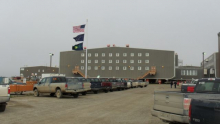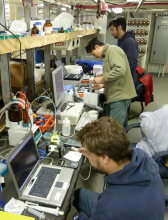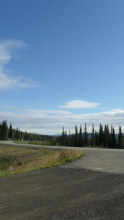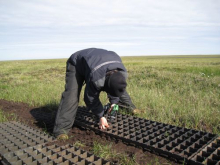Flow Studies on an Antarctic Glacier
What Are They Doing?
Glaciers are like moving rivers of ice, and their rate of movement can vary depending on many factors including friction, the slope of underlying bedrock, and climate. Byrd Glacier is unique because it goes through large changes in its speed in response to two subglacial lakes, lakes that remain unfrozen underneath the glacier, which drain periodically. This project was designed to study the changes in glacier behavior on timescales from minutes to years by closely monitoring Byrd Glacier for the following 2.5 years.
To do this, the research team installed about 30 GPS units on Byrd Glacier. Some of the sensors remained on the glacier during just the 2010-2011-research season (November – February) and some stayed out there and took recordings all year long. The data collected from different parts of the glacier provided a continuous record of horizontal and vertical motions over a 26-month time period.
The results of the study were used in conjunction with a longer record of remote sensing observations. The combined datasets were used to check a numerical model of the glacier’s flow dynamics, or changes in rates of movement. The modeling efforts were applied to other East Antarctic outlet glaciers so that scientists could develop a better understanding of glacier behavior in Antarctica.
The research team made two trips to Antarctica as part of the same project, first from 8-25 November 2010 and later in the field season from 29 January - 12 February 2011.










